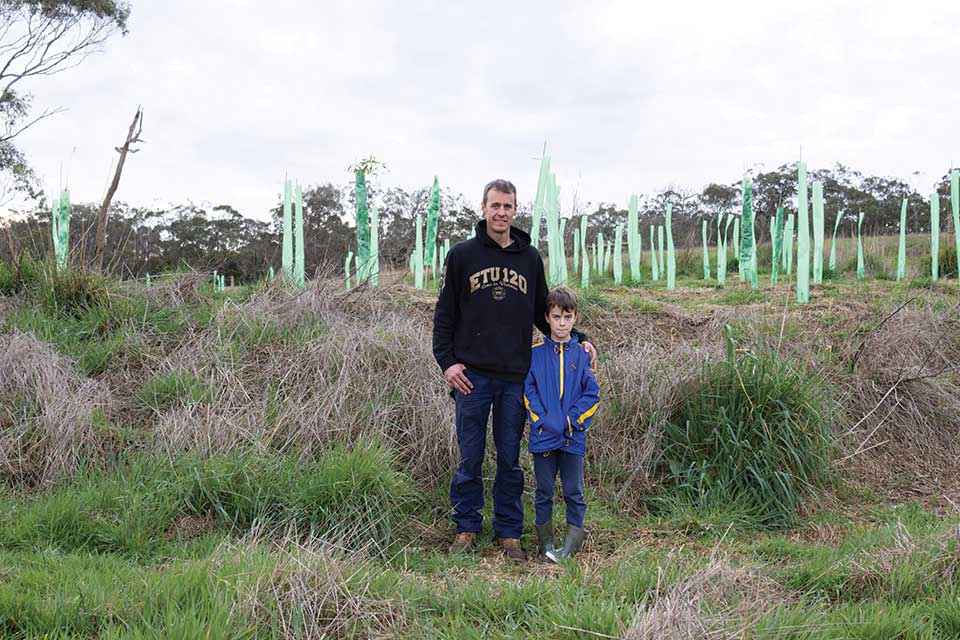Victorian Landcare Magazine - , Issue 89

Jeremy Rundell and his wife Jess were both raised on small farms in Portland and had a dream of providing their children with a similar upbringing.
In 2014 they bought a 30-hectare lifestyle property at Bolwarra so they could grow their own food, connect with nature, and foster a sense of self-sufficiency. With a shared passion for sustainable living, their journey to transform their land into a thriving ecosystem had begun.
According to Jeremy, having the space to cultivate their own food and experience the beauty of nature was incredibly important to him and Jess.
“As time went on, I became increasingly interested in regenerative agriculture and biodiversity. I wanted to create a property that not only supported our family, but also contributed to the health of the environment,” Jeremy said.
Their first challenge on the property was excluding the dairy cattle from the treed areas
Their first challenge on the property was excluding the dairy cattle from the treed areas. A Victorian Landcare Grant helped them to fence off the trees.
“Eventually, I aim to have trees lining the pastures and fences to provide shelter for the sheep, while minimising their access to wooded areas. This will balance the comfort of the sheep with the need to protect the trees. The goal is to create a pastoral landscape where trees offer shade and refuge for sheep. This will ensure both the well-being of the sheep and the preservation of the trees,” Jeremy said.
Jeremy and his family joined the Tarragal Landcare Group which has provided them with valuable knowledge, resources, and funding to help them implement their plans. One of their primary objectives was to restore connectivity on their property by linking existing dams and a wetland with corridors of native vegetation.
“By planting native species including manna gum, messmate stringybark, blackwood and prickly tea-tree, we are helping to restore the ecological integrity of the land. These corridors provide habitat for wildlife, but also improve water quality and reduce erosion,” Jeremy said.
The family used direct seeding techniques to establish the biodiversity corridors efficiently. They faced challenges from wallabies and koalas, eager to feast on the young plants. After experimenting with different methods to protect the seedlings they found tall plastic tree guards were most effective in deterring wallabies. Once the plants grew taller, the wallabies could no longer reach them.
The 20-metre biodiversity corridor serves as a vital link between the dams and wetland. The corridor provides connectivity between habitats and also plays a role in improving water quality.
Jeremy has kept a detailed list of species observed on the property since 2014. The list is a valuable tool for monitoring the success of their regeneration efforts.
“By documenting our progress through species lists and photographs, we hope to help motivate more landholders to adopt sustainable practices and become involved in Landcare,” Jeremy said.
Kristy Brewer is Landcare Facilitator for the Southwest Environment Alliance. Kristy’s position is funded through the Victorian Landcare Facilitator Program. For more information email facilitator@sealliance.org.au